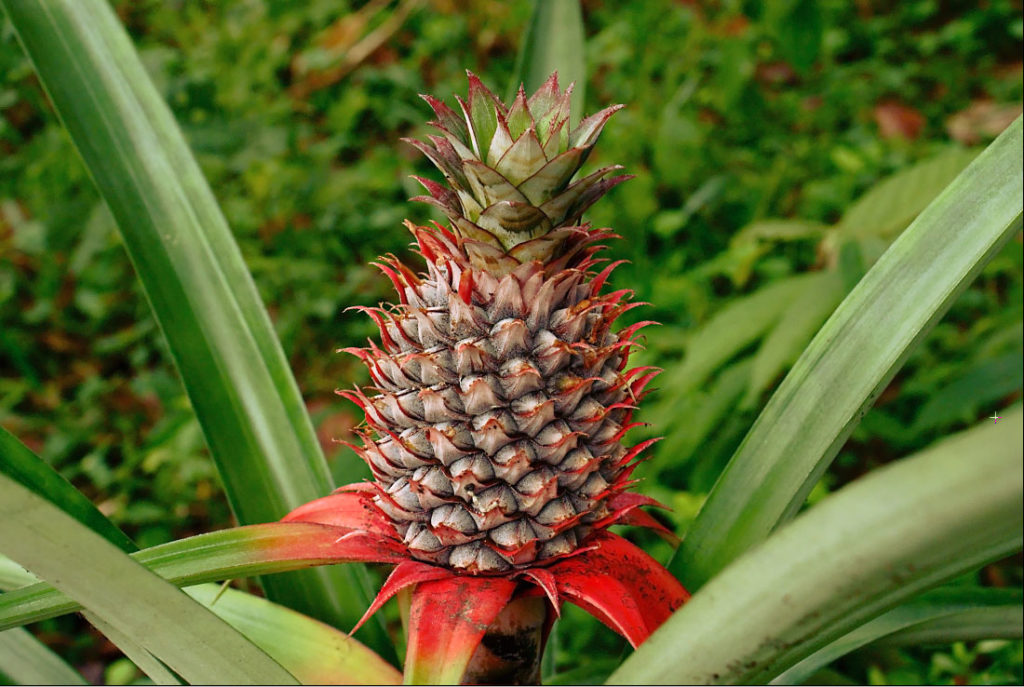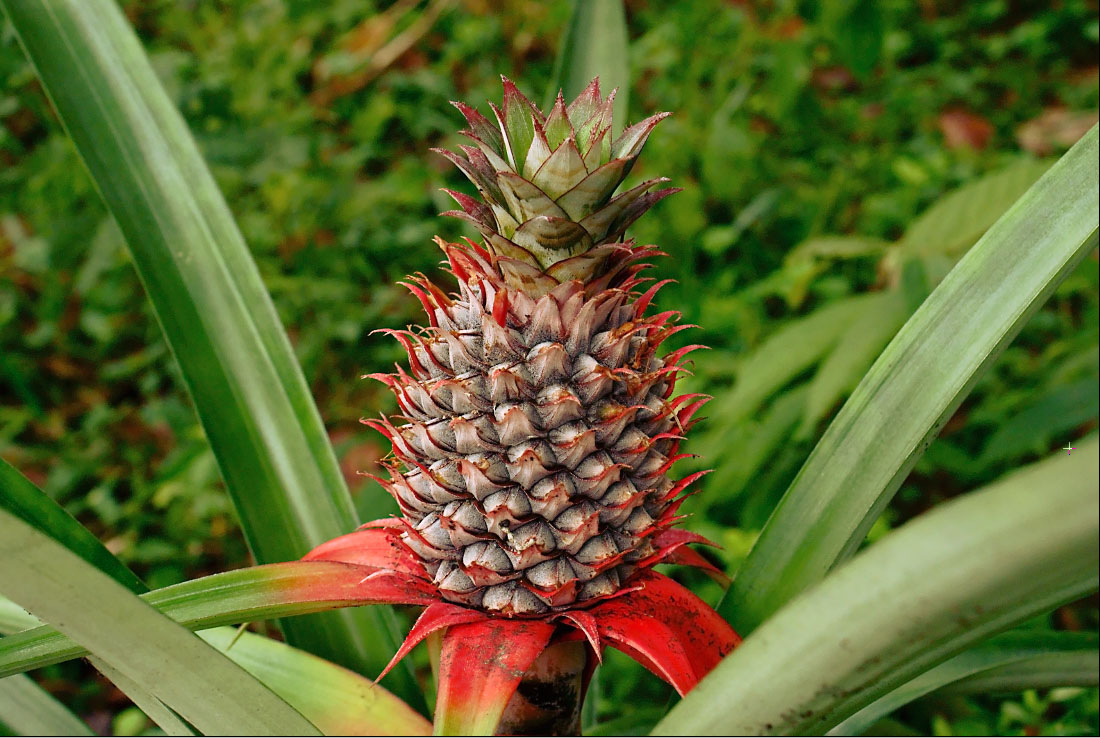
I learned this today. Pineapples grow from a small shrub and not on a tree.
The majority of fruits grow on trees. Some that don’t grow on trees grown on a hanging vine, like grapes. Some grow directly on the ground. Watermelon and other melons grow on the ground, but they are technically berries, and they grow on vines. Most fruit that grow on bushes are also berries, such as blueberries. Pineapples are the only real fruit that grow on bushes. However, they cheat a little bit because they are not a single fruit but are formed from a group of berries that grow together.
Pineapple cultivation starts with the plant. Pineapples don’t produce seeds, so they are always grown from parts of the mother plant. The top of the pineapple, the green leaves, can be used to grow a new plant, but this takes a long time. On pineapple farms, parts of the plants that grow between the leaves are taken off and replanted. These are called suckers and there will be small roots underneath them. If these roots and leaves are planted, a new pineapple plant will start to grow. The leaves are planted in the soil because the pineapple grows on a short shrub and not on a tree.
Pineapples grow best in sandy loamy soil. They need the temperature to be between 20 and 35℃ and if it is too cool the pineapple will be too sour and too hot the pineapple will be too sweet.
The leaves of the old plant are cut off to allow access to the suckers and the suckers are planted in the ploughed field. The pineapple plant starts to grow and it will reach about 120 cm in height. It has a short stocky stem and long green waxy leaves that can be up to 1m long.
After 12 to 20 months, depending on the climate, the center of the stem will grow into a spike that is about 15cm long. Flowers will begin to grow on this spike in a spiral formation. There are usually between 100 and 200 flowers. The ovaries of these flowers develop into berries, which then collapse and form one large fruit. This is what gives the pineapple its shape. The flowers interestingly form in line with the Fibonacci sequence. Actually, that’s backwards. They form in a way which allows the most flowers to grow in the space available and gives them optimal access to sunlight, which is the Fibonacci sequence.
Wild pineapples developed in Brazil and Paraguay, then they spread through most of South America. The pineapple was domesticated by 1200 BC. It was cultivated by the Mayas and the Aztecs. Columbus was the first European to encounter the pineapple in 1493. The Portuguese and the Spanish decided to cultivate it and the Portuguese took it to India and the Spanish took it to the Philippines. The climate was optimal in both places. People tried to grow them in Europe, but the climate wasn’t warm enough. It was only after the invention of the greenhouse in 1658 that it became possible.
Pineapple was a luxury food right up until the invention of refrigerated sea transport. Pineapples have to be picked when they are ripe and they don’t ripen anymore after that. Before the invention of refrigerated transport, it was basically impossible to import them to Europe so the only pineapples that could be eaten were the ones grown in Europe, which cost a huge amount of money to grow.
The Spanish took pineapples to Hawaii in the 18th century and Hawaii was responsible for the majority of world pineapple production until the 1970s when the increase of refrigerated transport meant the market shifted to cheaper places such as the Philippines and Costa Rica. These days, most pineapples come from the Philippines.
Pineapples are grown on plantations and they are mostly made of water, so their water consumption is high. They have to be planted and picked by hand so they are very labor intensive and the work is usually done by low-wage manual workers. The pineapples also have to be sprayed with pesticides, which are very harmful to the underpaid workers who plant and pick them.
So, the pineapple that we eat has grown from 200 flowers that turn into berries at the center of a plant. These berries stick together and form the pineapple fruit. Most pineapples are grown in the Philippines and the workers that grow them are usually not given a fair wage. Each pineapple takes one to two years to produce. I have to be more appreciative of each pineapple I eat. And this is what I learned today.
If you read this far, I would appreciate a like and a follow.
Photo By Suniltg at Malayalam Wikipedia – Transferred from ml.wikipedia to Commons by sreejithk2000., CC BY 3.0, https://commons.wikimedia.org/w/index.php?curid=13247464
Sources:
https://en.wikipedia.org/wiki/Pineapple
https://www.livescience.com/44499-how-do-pineapples-grow.html
https://www.treehugger.com/do-pineapples-grow-on-trees-4864128
https://tropicalfoodgarden.com/how-do-pineapples-grow/
https://www.wonderopolis.org/wonder/does-all-fruit-grow-on-trees
https://blog.aghires.com/pineapples-dont-grow-trees/
https://www.answers.com/chemistry/Scientific_explanation_of_why_pineapple_have_many_eyes

